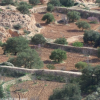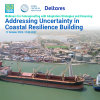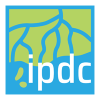Introduction
Rainwater harvesting is a tradtional technique used across the world from ancient times to 'catch rain where it falls. It has great potential to recharge and rehydrate the earth's landscape. The principle is simple: capture rainfall runoff, allow it to stand and percolate to replenish soil moisture and aquifers.
Rainwater harvesting serves different purposes in different agro-eco-climatic zones. In drylands, it provides water for farming, human and animal use. In hilly areas, it improves soil moisture. In wet areas, it enriches plant and human life. Thus, methods of RWH vary greatly from one climatic zone to the next, and even by topography.
Water harvesting offers under-exploited opportunities for the predominantly rainfed farming systems of the drylands in the developing world. It works best in precisely those areas where rural poverty is worst. When practiced well, its impact is to simultaneously reduce hunger and alleviate poverty, as well as to improve the resilience of the environment.
In this article we try to summarise existing knowledge and link to organisations, and different resources in this area. The focus is on practical application that has proven to work and can be scaled up.
Rainwater harvesting methods
Sub-Saharan Africa is heavily dependent on rain for agriculture. As many as 95% people depend on 'green water': moisture from rain held in the soil. Fortunately, there are many ways to conserve and use rain, that can be classified into three buckets -
- Collecting run-off
- Improving the infiltration of rain
- An integrate approach to manage water, land and crops at the watershed scale that maximises the storage of water in soils, wetlands and aquifers
There are examples from several countries on rainwater harvesting. We have attempted to document some of them here. They include the Fanya-juu terraces of Machakos, Kenya; checkdams and ditches as from Eritrea and Israel; and storage systems from Mexico, Ethiopia, Sudan and India. In China's arid Gansu province, 2 million people are supplied water in small, spherical sub-surface tanks to collect rainwater.
Rainwater harvesting for agriculture
Rainwater harvesting (Zai) in Chad
Farmers in Chad’s semi-arid Sahelian zone have been using an indigenous rainwater harvesting technique called Zaï to successfully grow crops. Zaï involves the digging of small pits and sowing crops in them. The pits retain water for a long period of time and are particularly efficient when there isn’t much rain. The Zaï technique was enhanced by introducing manure and compost into the pits to provide nutrients to the crops. This helped rehabilitate soils that are heavily degraded and significantly increased the yields of food crops.
In Burkina Faso, Zai feeds thousands
In Burkina Faso, farmers have applied traditional systems of agroforestry, water harvesting and soil management, which were modified to suit the changing circumstances implemented to scale. In Burkina Faso an estimated 200,000 to 300,000 hectares of farmland have been re-invigorated by farmers developing zaï planting pits and stone bunds – yielding an extra 80,000 tons of food annually – enough to feed 500,000 people.
Soil and water conservation in Ethiopia
The highlands of Ethiopia have been subject to extensive land degradation leading to food insecurity. The densely populated and intensively cultivated Tigray region, in northern Ethiopia, was notorious for the 1984 famine. Over the past decade or so, consistent soil and water conservation has changed the landscape. More than half the farmland has been covered, raising crop yields by as much as 100%. This story of success shows how working at scale makes a big impact.
Terrace farming, throwing it upwards, in Kenya
Terrace farming on slopes helps conserve water. Along with other measures such as micro-dams, stone bunds and percolation pits, this can reduce surface runoff and increase soil moisture. One such system called Fanya juu terrace have expanded in several parts of East Africa, particularly in the Machachakos District in Kenya where 85% of the land is now terraced.
Controlled intensive grazing to restore the savannah in Zimbabwe
Controlled, intensive grazing is being promoted to regenerate vast savannah grasslands in parts of Africa. In this practice, herds of domesticated livestock are kept in one location for a certain duration to intensively graze the grasses and other vegetation, trampling and break down the soil and vegetation. The herd is moved to another location after some days and the intensively-grazed plot is allowed to regenerate for a few months.
Rainwater collection in monkey cheeks in Thailand
Thailand is not short of rain, but there are droughts after the rains have abated. The term ‘monkey cheek’ was coined by King Bhumibol Adulyadei of Thailand as a metaphor to promote local water retention systems and is part of the ‘New Theory’ agriculture. It refers to monkeys filling up their cheeks with excess food. Monkey cheeks essentially are 3R: Recharge, Retention and Reuse.
Soil and water conservation
Harvesting sediments and water with warp dams in China
To transform the plateau’s landscape and check erosion of the Loess Plateau, the Chinese Government started one of the largest landscape transformations in the world in the 1990s using small structures called warping dams. These are built on gullies to harvest and intercept sediments and thereby create new land. They harvest sediment and ensure better water retention.
Spreading floodwaters in Iran and checking salinity
People in arid areas around the world innovate with water conservation, especially rainwater harvesting. One such is the Fars Province in Iran, a desert landscape. Since 1983, an extraordinary programme of floodwater harvesting has been implemented that has turned area lush green. This programme has turned silt-laden floods into an asset. It has been combined with upstream water management to control the salinity in the Helleh River
Stone line bunds / stone contour lines
Stone line bunds or stone contour lines are long rows of stones which reduce water run-off, mitigating flooding, and instead allowing rainwater to seep into the soil. The slowing down of flows helps decrease soil erosion, accumulate organic matter and sustain fodder productivity from high moisture content. It is thus providing a good environment for fodder and grass to grow and restore the land with vegetation and guaranteeing the harvest. If a good vegetation cover is developed on the stone bunds, they also lower soil temperature, provide protection against wind erosion and help to conserve biodiversity.
- Rainwater harvesting in the Maroodi Jeex landscape مَرودِ جيحْ in Somaliland
- The Story of Al Baydha: A Regenerative Agriculture in the Saudi Desert
A check dam (also called gully plug) is a small, temporary or permanent dam constructed across a drainage ditch, swale, or channel to lower the speed of water flows. A check dam can be built from different materials ranging from wood logs, stones, or grass bundles. Reduced runoff speed reduces erosion and gully erosion in the channel and allows sediments and other pollutants to settle. Check dams are inexpensive and easy to build. They may be permanent if designed properly. Furthermore, they allow groundwater recharge. Read more: Sustainable Sanitation and Water Management Toolbox
- Watch a video about check dams and how it works in arid climates.
Sand dams
To harvest runoff water, sand dams is a good solution. Sand dams and subsurface dams (both some times called more general groundwater dams) store water under the ground. A sand dam is a small dam build above ground and into the riverbed of a seasonal sand river. Sand accumulates upstream of the dam, resulting in additional groundwater storage capacity.
A subsurface dam obstructs the groundwater flow of an aquifer in a similar way and stores water below ground level. Sand and subsurface dams are suitable for rural areas with semi-arid climate in order to store only seasonal available water to be used in dry periods for livestock, minor irrigation as well as for domestic use. They can be built with locally available material and labour but building a dam still requires relatively high investments, is labour intensive and specific expertise is needed. While mostly East and Southern Africa implement sand dams, there is a great potential to scale up this solution to other African countries. Read more: Sustainable Sanitation and Water Management Toolbox
Rainwater harvesting in cities
Read more on this on: Green Roads for Water, a publication by RUAF, a consortium of experts and institutions promoting urban agriculture.
Please contact wac@gca.org to add your examples - or upload your own case study or article.
Further resources
- Restoration in action against desertification - a manual for large -scale restoration
- Water Harvesting - Guidelines to good practice
- Sand dams or subsurface dams
-
WOCAT is a global network on Sustainable Land Management (SLM) that promotes the documentation, sharing and use of knowledge to support adaptation, innovation and decision-making in SLM
World Overview of Conservation Approaches and Technologies -
The RUAF Global Partnership on Sustainable Urban Agriculture and Food Systems is a consortium of expert institutions and individuals that includes cities, research institutes and NGOs, with a recognised track record in urban and peri-urban agriculture and urban food system solutions.
RUAF













Trending Discussions
From around the site...
“Absolutely interested! I'll connect via email to discuss reviewing and enhancing the Economic Analysis of Climate...”
Adaptation-related events at COP28 (all available to follow/stream online)
“Please check out these adaptation-related events taking place at COP28 - all available online (some in person too if...”
Shining a light for biodiversity – four perspectives to the life that sustains us. Four hybrid sessions.
“30 November to 19 December 2023 - Four Sessions Introduction The SDC Cluster Green is happy to invite you to the...”